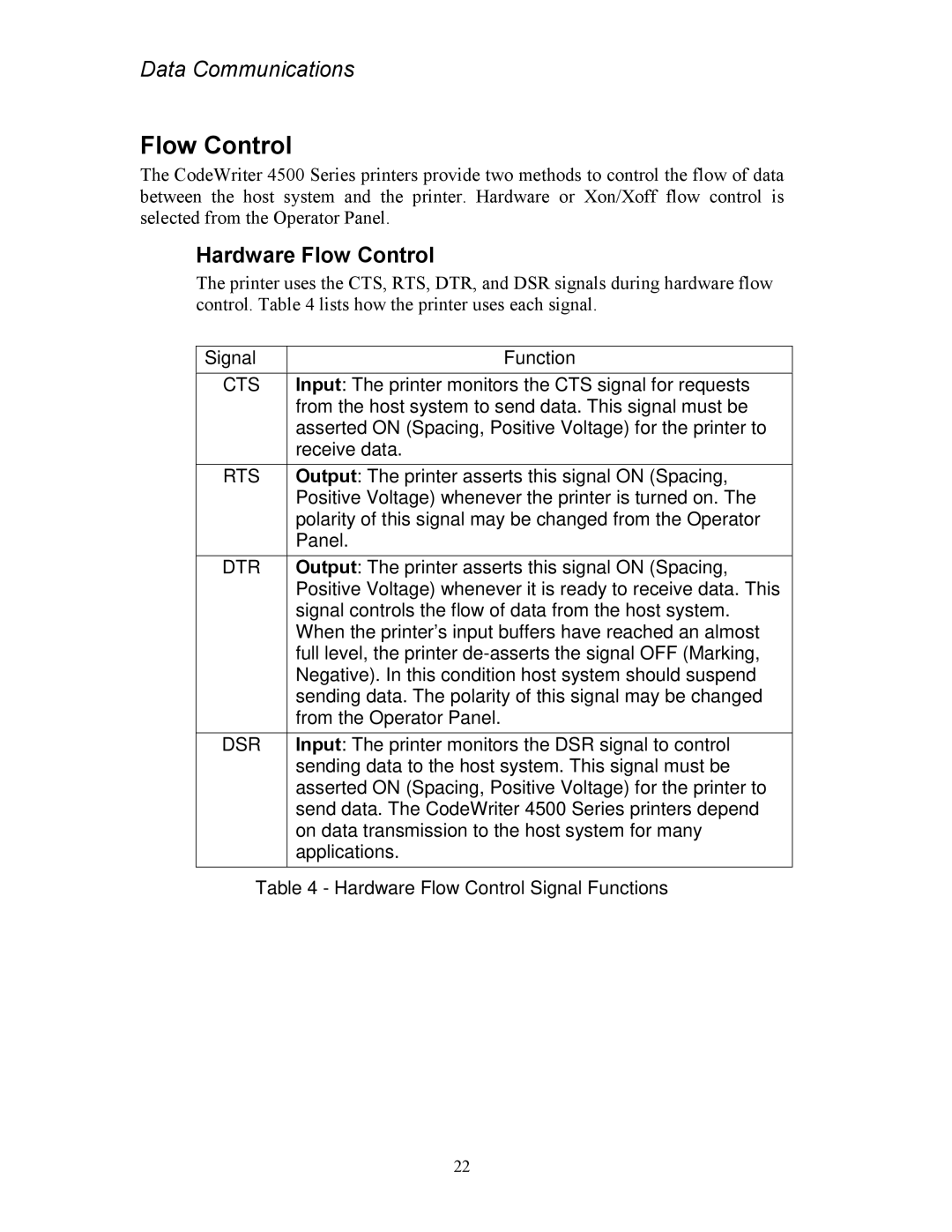Data Communications
Flow Control
The CodeWriter 4500 Series printers provide two methods to control the flow of data between the host system and the printer. Hardware or Xon/Xoff flow control is selected from the Operator Panel.
Hardware Flow Control
The printer uses the CTS, RTS, DTR, and DSR signals during hardware flow control. Table 4 lists how the printer uses each signal.
Signal | Function |
CTS | Input: The printer monitors the CTS signal for requests |
| from the host system to send data. This signal must be |
| asserted ON (Spacing, Positive Voltage) for the printer to |
| receive data. |
RTS | Output: The printer asserts this signal ON (Spacing, |
| Positive Voltage) whenever the printer is turned on. The |
| polarity of this signal may be changed from the Operator |
| Panel. |
DTR | Output: The printer asserts this signal ON (Spacing, |
| Positive Voltage) whenever it is ready to receive data. This |
| signal controls the flow of data from the host system. |
| When the printer’s input buffers have reached an almost |
| full level, the printer |
| Negative). In this condition host system should suspend |
| sending data. The polarity of this signal may be changed |
| from the Operator Panel. |
DSR | Input: The printer monitors the DSR signal to control |
| sending data to the host system. This signal must be |
| asserted ON (Spacing, Positive Voltage) for the printer to |
| send data. The CodeWriter 4500 Series printers depend |
| on data transmission to the host system for many |
| applications. |
Table 4 - Hardware Flow Control Signal Functions
22
